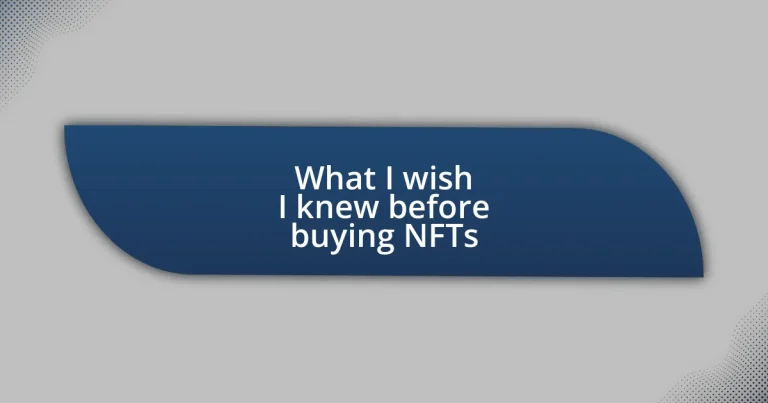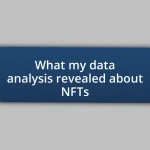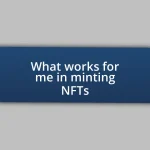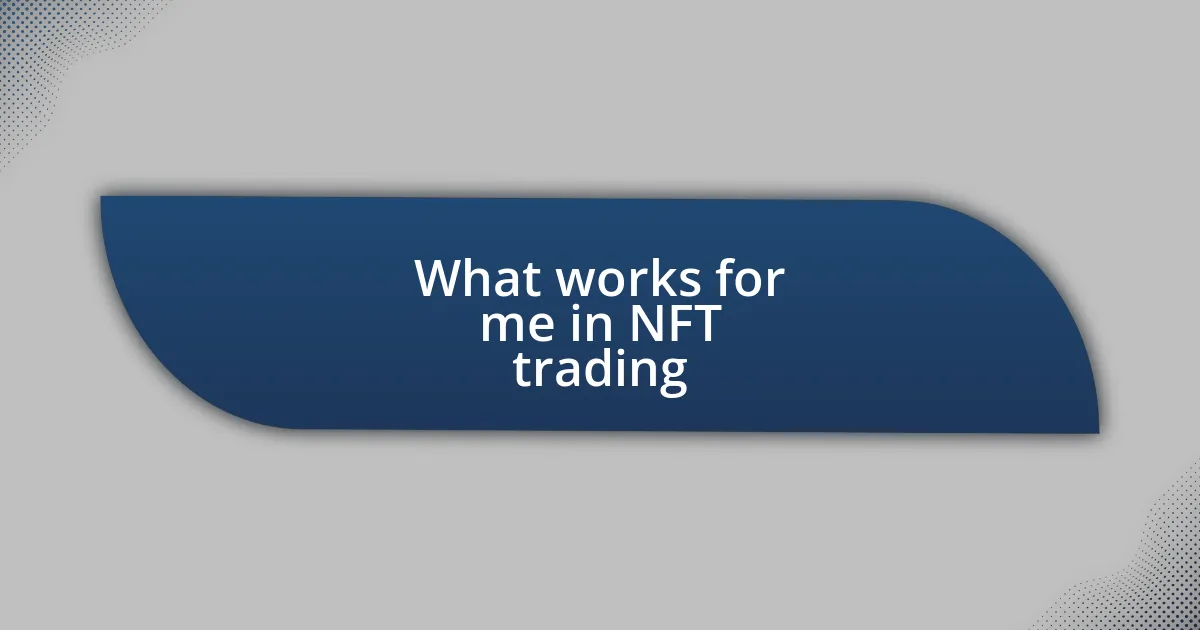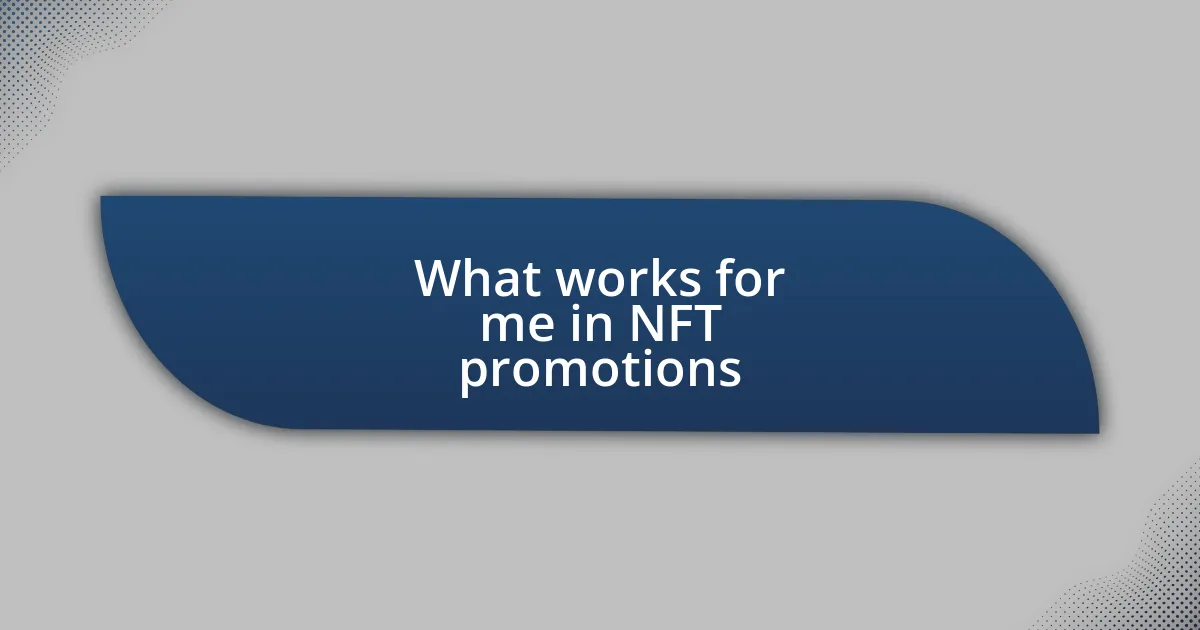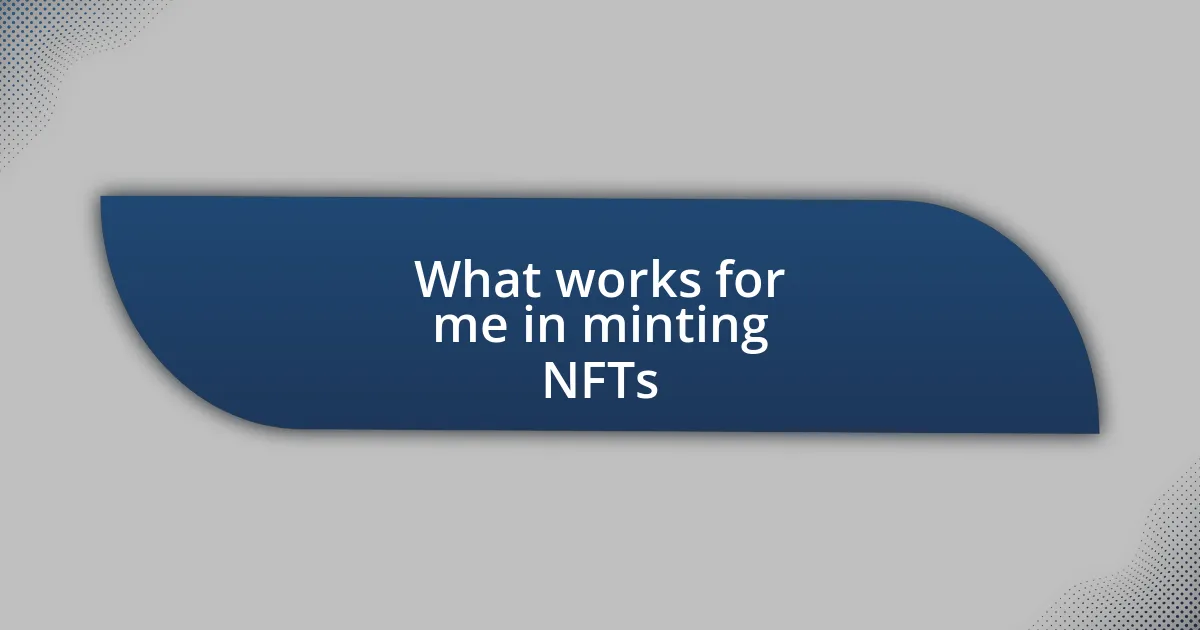Key takeaways:
- NFTs are unique digital assets that establish ownership and value through blockchain technology, connecting creators and communities.
- Evaluating NFT value involves factors like artist reputation, scarcity, historical context, community support, and utility.
- Identifying scams requires thorough research, transparency about creators, and community feedback to avoid counterfeit art.
- Long-term viability of an NFT depends on the underlying technology, community engagement, and awareness of market trends.

Understanding NFTs Basics
Let’s dive into the basics of NFTs, starting with what they really are. NFTs, or non-fungible tokens, are unique digital assets verified on a blockchain, which is essentially a decentralized digital ledger. I remember my first encounter with NFTs; I was confused because they seemed so abstract. How could something digital be owned like physical art?
One standout aspect of NFTs is their non-fungibility, which means each token is distinct and not interchangeable. I recall being amazed at the idea behind this uniqueness; it’s like owning a one-of-a-kind painting versus having a print of a famous piece. This concept hit me when I saw my first NFT auction—people were willing to pay hefty sums for what seemed like just a JPEG. That’s when I realized: the value isn’t just in the image but in the ownership and the story behind it.
The appeal of NFTs often lies in their connection to creators and communities. I vividly remember interacting with artists who shared their passion for their work and how NFTs empowered them to monetize it directly. Have you ever thought about how digital ownership can build a community around shared interests? It’s fascinating to explore how these tokens are not just collectibles but a way for fans to support their favorite creators. So, understanding NFTs is more than just knowing the mechanics; it’s about grasping the impact they have on creativity and ownership in the digital realm.
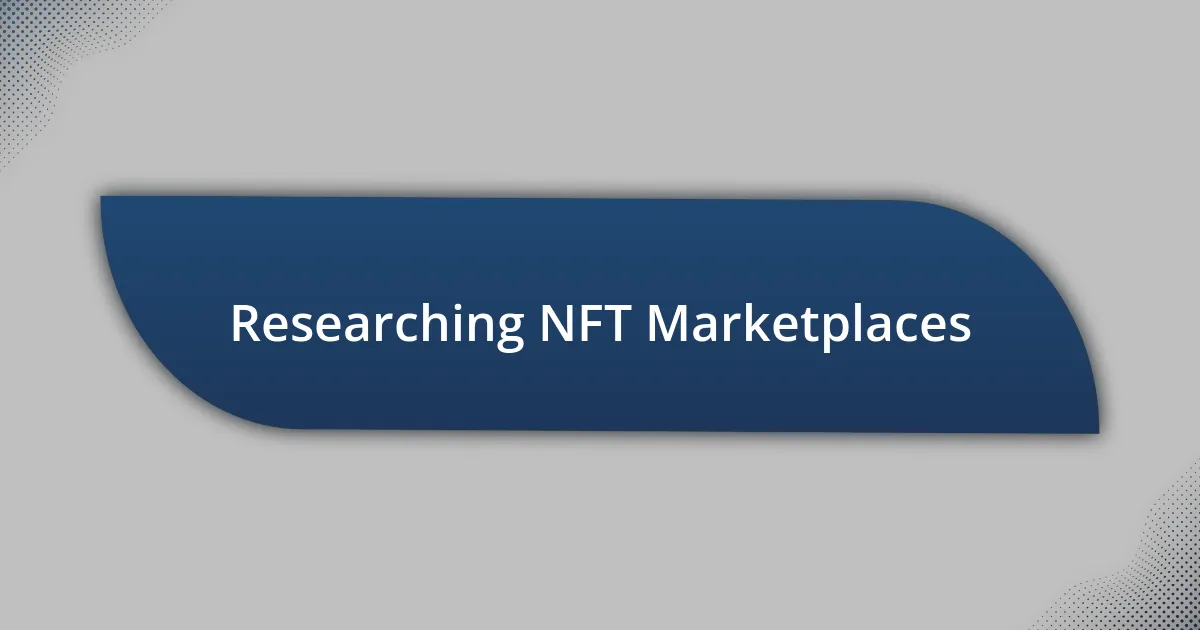
Researching NFT Marketplaces
When it comes to researching NFT marketplaces, I’ve found that not all platforms are created equal. My own experience led me to spend hours comparing them before making a purchase. Each marketplace has its unique features, fees, and user communities, which can dramatically influence your buying experience. It’s easy to overlook the nuances, but understanding these differences can save you money and headaches later on.
As I navigated through various marketplaces, I noticed that some had a more user-friendly approach, while others catered to seasoned collectors. It was eye-opening to see how community engagement could play a pivotal role in my experience. Have you ever felt lost in a new environment? I remember feeling overwhelmed during my first foray into the NFT space; establishing a sense of belonging in a marketplace helped me make more informed decisions.
A solid comparison among various marketplaces can aid in identifying the best fit for your needs. While examining fees, available collections, and security features, I discovered that making a checklist can streamline your decision-making process. I once missed out on a fantastic NFT simply because I hadn’t done enough research on the platform it was available on. This experience taught me that diligence pays off!
| Marketplace | Fees |
|---|---|
| OpenSea | 2.5% transaction fee |
| Rarible | 2.5% seller fee |
| Mintable | Variable fees based on type |
| Foundation | No minting fee for creators |
| SuperRare | 15% on secondary sales |
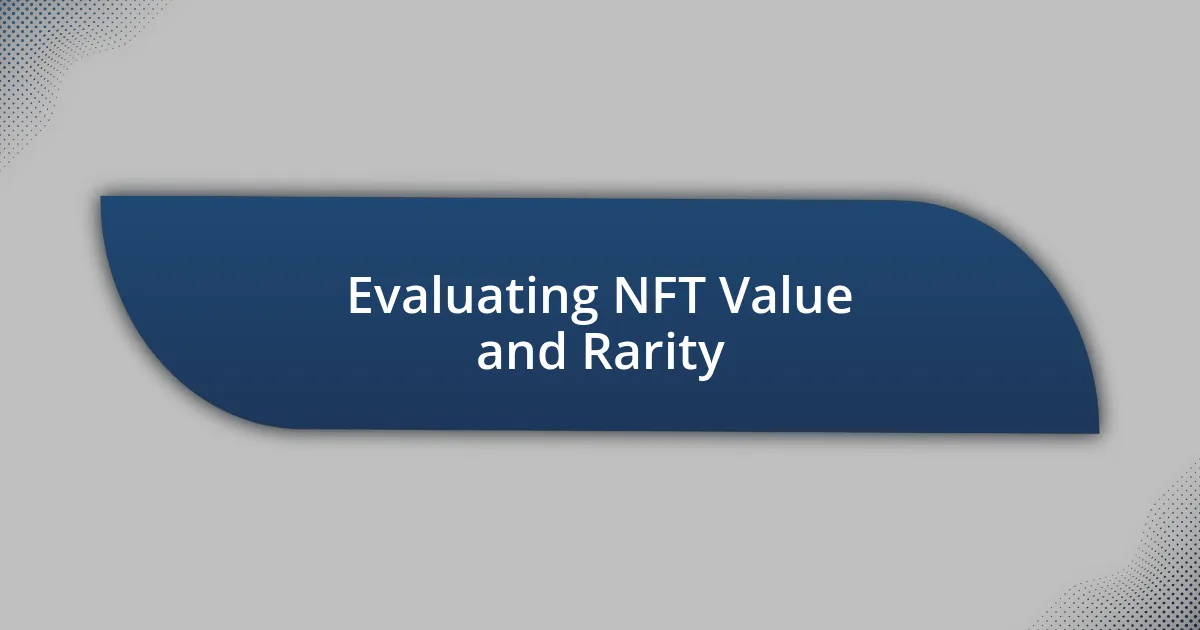
Evaluating NFT Value and Rarity
Evaluating the value and rarity of NFTs can be one of the most challenging aspects of entering the space. I remember my first purchase felt like a leap into the unknown, and I quickly learned that not all NFTs hold the same value. Factors such as the artist’s reputation, the uniqueness of the piece, and its historical significance can greatly impact its worth.
Here are some key aspects I consider when evaluating an NFT:
- Artist Reputation: Established artists often command higher prices, similar to traditional art markets.
- Scarcity: Limited editions or one-of-a-kind pieces tend to be more valuable.
- Historical Context: The relevance of the NFT within certain cultural moments can enhance its desirability.
- Community Support: Active engagement from the community can increase an NFT’s popularity and value.
- Utility: NFTs with added functionalities, like access to events or exclusive content, can have enhanced worth.
As I delved deeper into this topic, I realized that rarity doesn’t just stem from the number of items created. I recall the excitement of flipping through the listings and discovering a unique NFT that had a compelling backstory. That moment served as a reminder that understanding the narrative behind an NFT can shape its value.
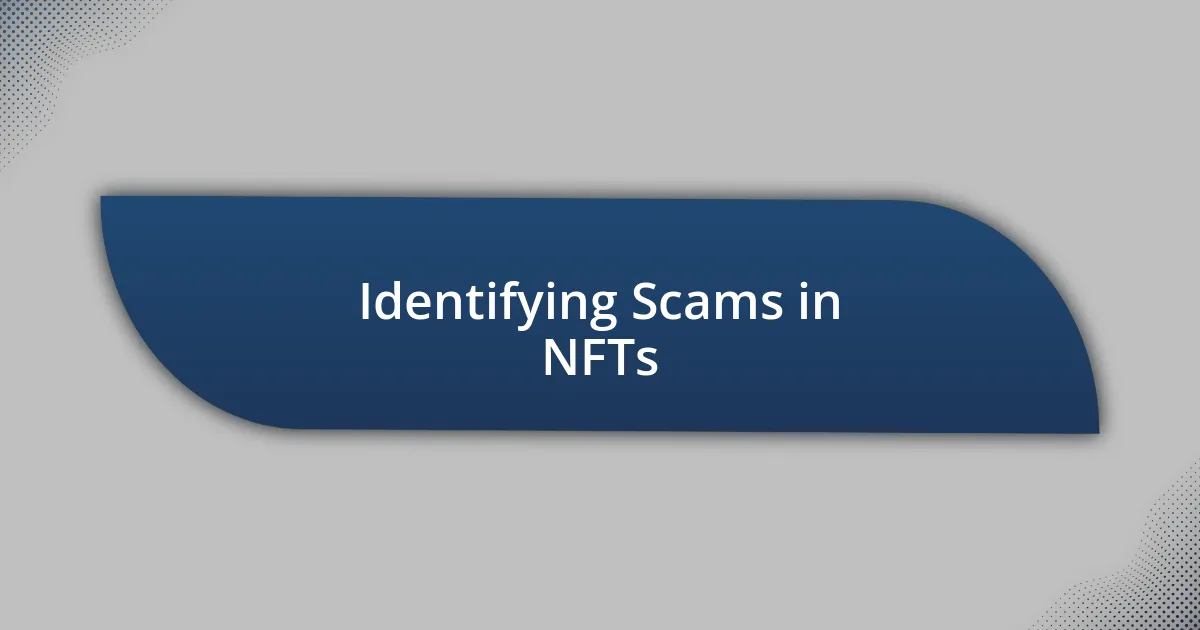
Identifying Scams in NFTs
Identifying scams in the NFT space can feel like navigating a labyrinth. I once found myself drawn to a project that promised exclusive access and unique rewards, only to realize too late that it was a complete front. Always ask yourself: does the project seem too good to be true? If your gut is uneasy, it’s worth digging deeper.
One of the biggest red flags I encountered was when a seller presented an alluring NFT without any transparent information about its origin. I felt the thrill of potential ownership, but that thrill quickly turned into doubt. It’s crucial to verify the creator’s authenticity and ensure they have a history of legitimate work—this can protect you from falling into the grasp of counterfeit art.
Lastly, community feedback is invaluable in spotting scams. I remember seeing a vibrant online community discussing an NFT collection I was interested in. Their enthusiasm felt genuine, but the absence of critical voices raised my suspicions. Engaging with other collectors can provide insights and warnings that might save you from a regrettable purchase. Always research thoroughly and join discussions before making your investment.
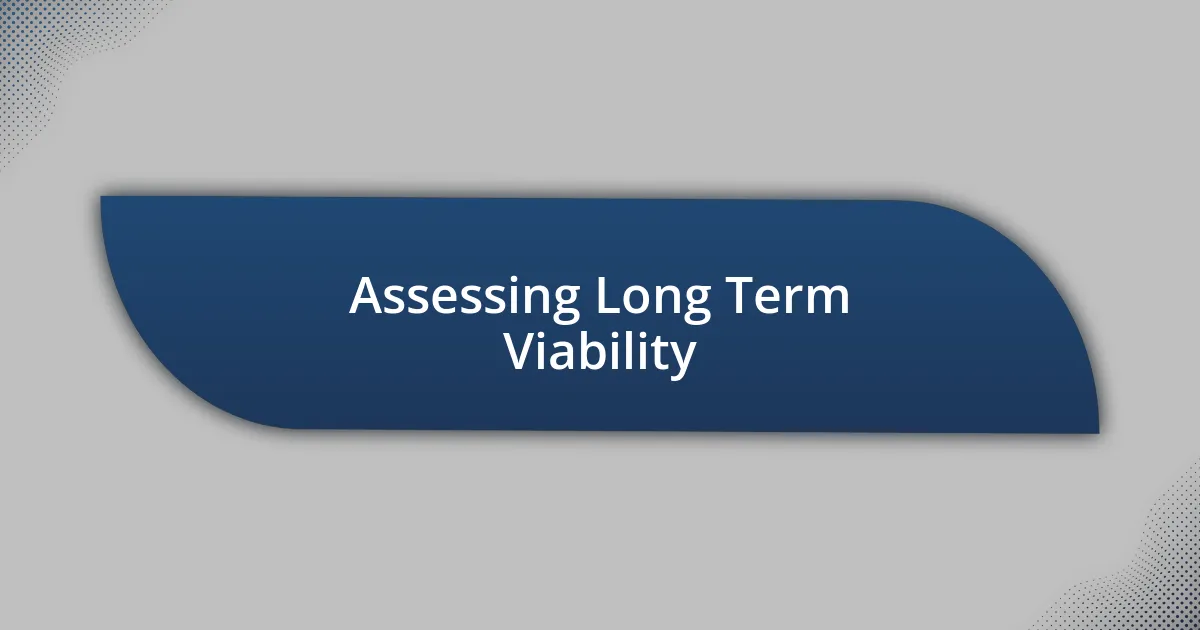
Assessing Long Term Viability
When considering the long-term viability of an NFT project, it’s essential to evaluate the underlying technology and platform. I remember purchasing an NFT that was tethered to a blockchain that seemed promising at the time. However, as I researched more, I realized that the platform was still in its infancy, with many technical issues that could hinder the NFT’s future. It made me wonder—how stable is the foundation that this digital asset rests upon?
Engagement and activity levels within a community can be telling indicators of an NFT’s durability. There was a project I got into that had incredible initial hype, but over time, participation dwindled, and I found myself wondering why. As I started to interact more with fellow enthusiasts, I learned that many felt disillusioned with the developers’ lack of communication. This experience underscored the importance of not just owning an NFT, but being part of an active and vibrant community that can foster growth and interest over time.
I also think about the broader market trends and how they can influence the longevity of NFTs. I once eyed a collectible that aligned with an emerging trend, only to find out later that trends can shift rapidly. I found myself asking: Is this something that could be regarded as iconic in the years to come? Understanding how cultural shifts impact the NFT landscape can be the difference between a wise investment and a fleeting craze.
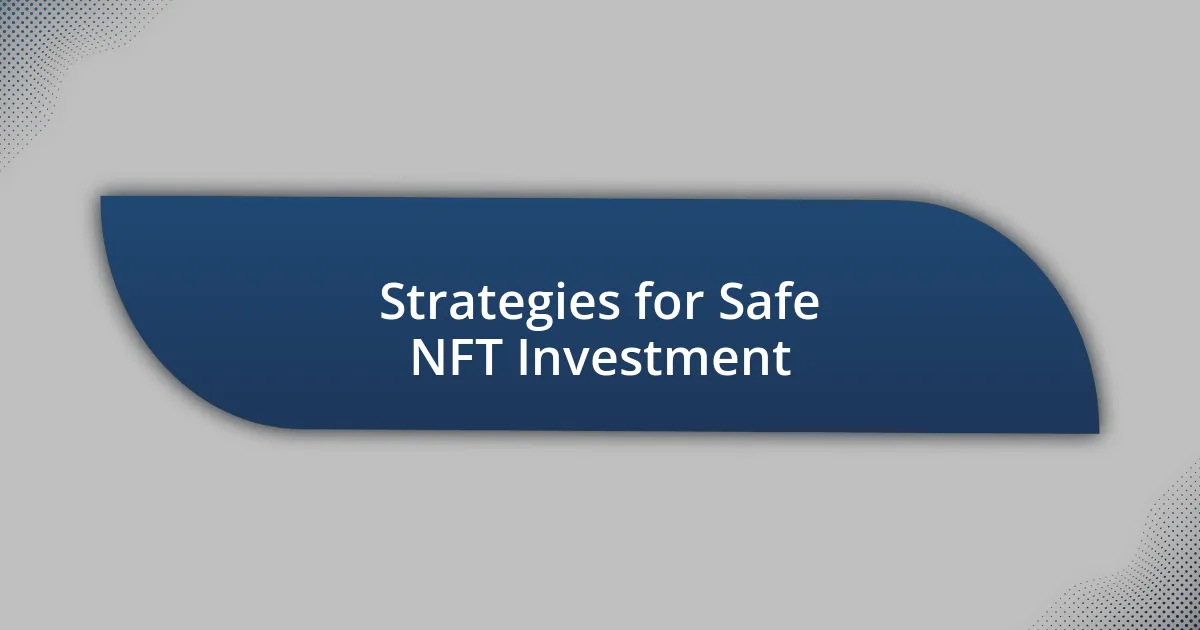
Strategies for Safe NFT Investment
When it comes to safe NFT investment, thorough research is crucial. I once jumped into an NFT sale based purely on a flashy marketing campaign. It felt exhilarating at first, but I soon learned that behind the hype, there was little substance. Have you ever given more thought to the project’s whitepaper than the eye-catching art? A comprehensive read can reveal a project’s true potential or lack thereof.
Diversification is another strategy I now advocate. Instead of pouring all my resources into one NFT, I started spreading my investments across various projects and genres. This not only mitigated risk but also opened the door to discovering unique pieces I wouldn’t have considered otherwise. It’s like having a diverse portfolio in traditional investments—don’t put all your eggs in one digital basket.
Lastly, consider following seasoned collectors and experts in the NFT space. I remember joining an online forum and soaking up knowledge from veterans who had weathered the ups and downs of the market. Their insights guided me toward reputable projects and warned me about potential pitfalls. Engaging with informed voices can empower your decisions and make the NFT world feel less overwhelming. Have you found mentors in your investing journey?

